► Behind the wheel of the last Capri ever built
► Special edition 280 has a 160bhp V6
► Short on sophistication, full of old-school cool
In February 1964, four lads from Liverpool touched down at New York JFK airport. By April, they occupied the top five places in the singles chart. Beatlemania had landed, and Mustang mania wasn’t far behind. Launched that same month, the Ford didn’t quite surpass the Fab Four, but it still became the fastest-selling car of all time, shifting 680,000 in its first year. Amazingly, the record still stands.
Henry Ford II wasn’t about to look a gift pony in the mouth, and summoned Mustang designer Philip T. Clark to demand a European equivalent. The Capri debuted in 1969, a curvaceous coupe wearing a badge that oozed Mediterraneanglamour. Promoted as ‘The car you always promised yourself’, it too was an instant hit. Within five years, Ford racked up a million sales.
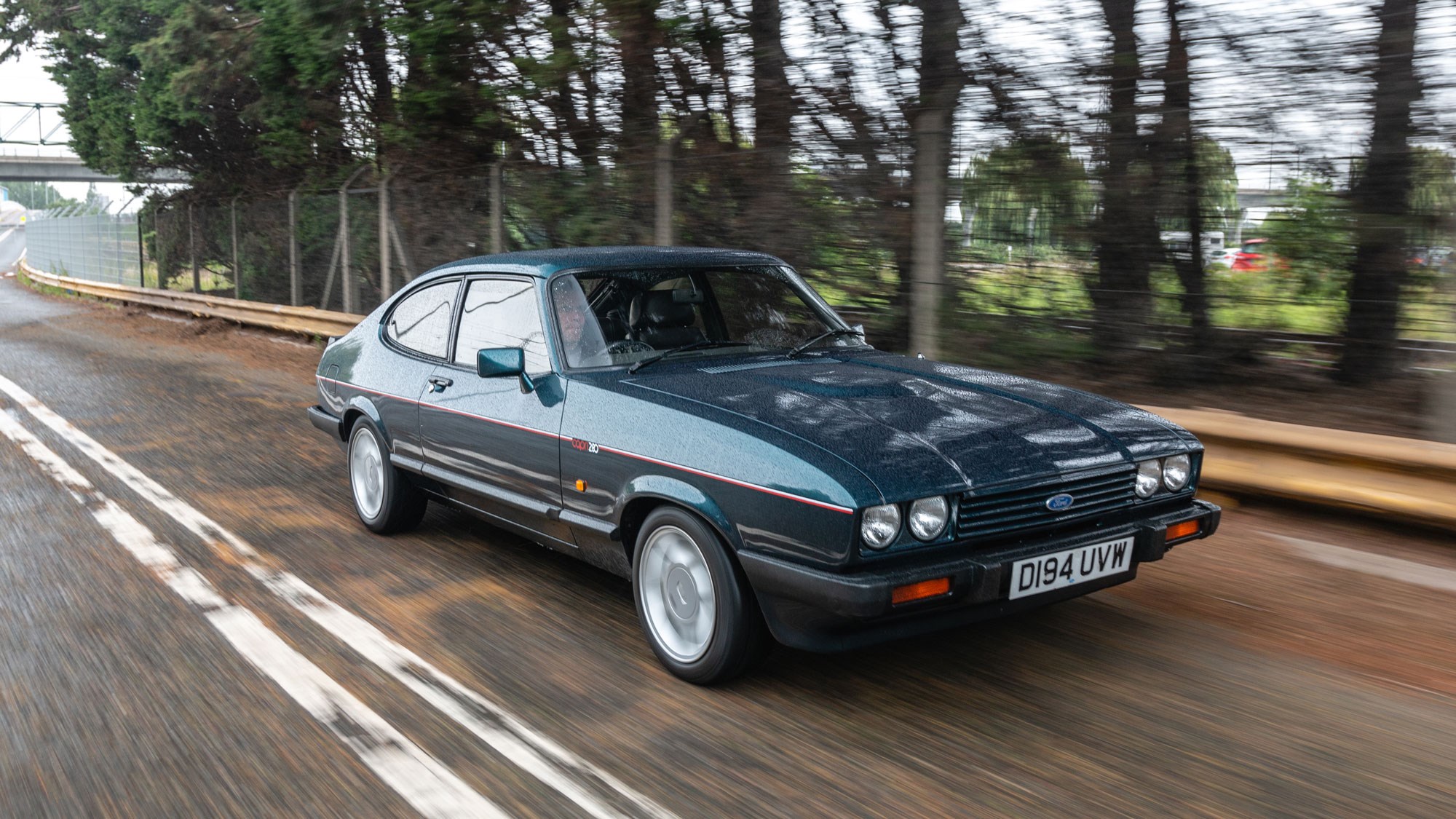
Both the Mustang and Capri followed a similar formula: clothing humdrum hardware in a sharply-tailored suit. The former was based on the American Ford Falcon saloon, while the latter shared its oily bits – including a live rear axle – with the Mk2 Cortina. British buyers initially had a choice of 1.3- and 1.6-litre four-cylinder engines, soon followed by the V6-powered 3000 GT.
The 1970s were the golden age of the Capri. Lurid paint colours such as Signal Orange, Jupiter Red and Bermuda Blue brightened up Britain’s streets, often accessorised with vinyl roofs, rear window slats and RS alloys. TV detectives Bodie and Doyle drove Capris in The Professionals, while Dieter Glemser and Jochen Mass won European Touring Car Championship titles in the RS2600. By the time the Mk3 arrived in 1978, though, the Capri was starting to lose its lustre.
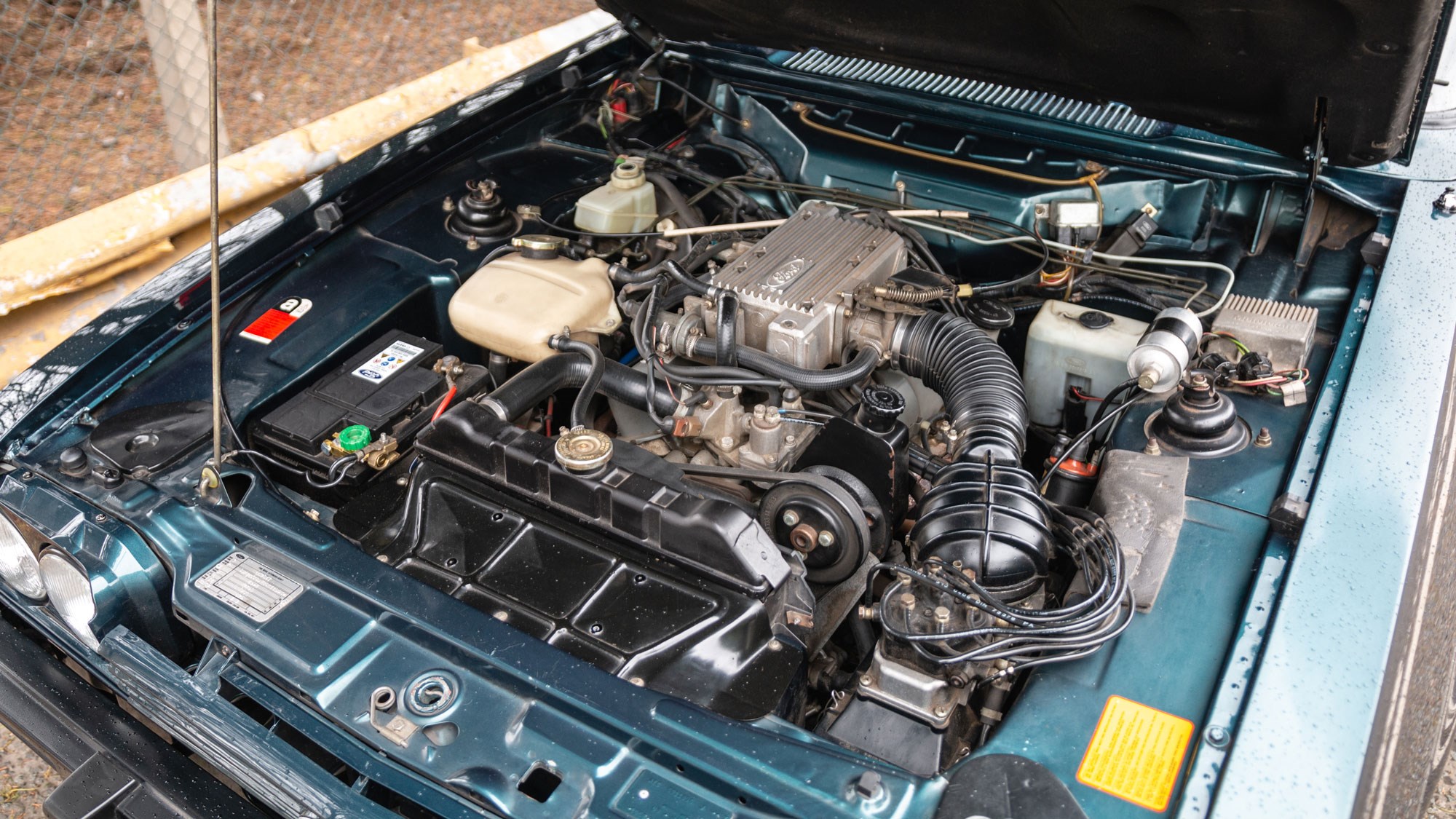
The hot hatchback was a new breed of working class hero, and its meteoric rise coincided with the Capri’s slow decline. The Escort XR3 and Sierra XR4i were the fresh-faced stars of Ford showrooms, yet Britain retained a strong affection for the Capri, becoming its sole European market from 1985. The final car, a 280 ‘Brooklands’ special edition, rolled off the line on 19 December 1986, and is now part of Ford’s heritage collection. Today, I’m here to drive it.
From Detroit to Dagenham
If the Capri is our Mustang, then Dagenham is our Detroit. The Essex suburb was once home to Europe’s largest car factory, but huge swathes of the site now lie derelict. Today, only engines are built here, but road names such as Consul Avenue and Cortina Drive are a poignant reminder of the past.
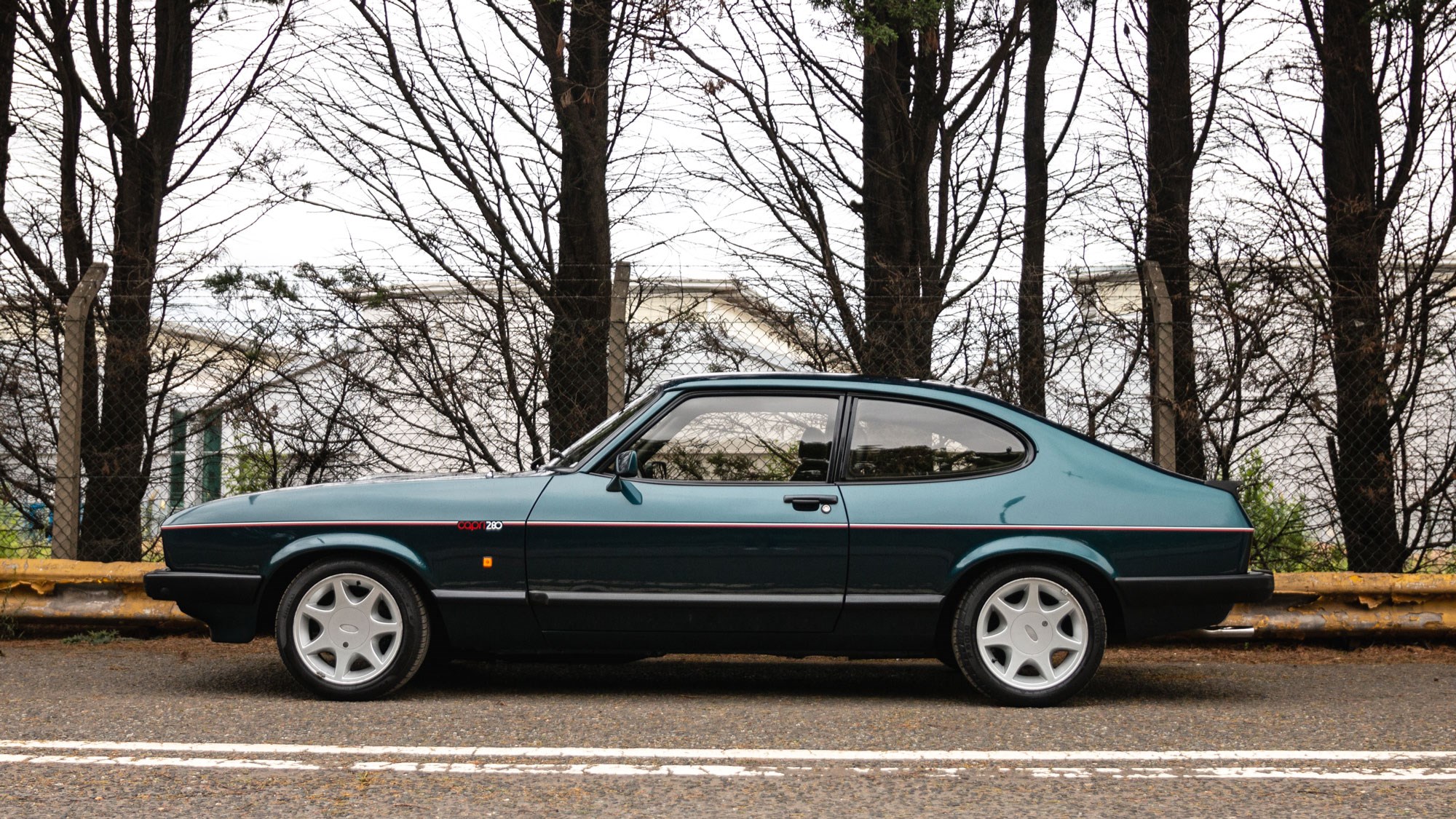
Ford’s heritage workshop sits in the shadow of Barking Reach power station and was originally the assembly line for Model AA trucks. It’s raining when I arrive and the tin roof is leaking into a carefully-placed bucket. It’s the exact opposite of the steel-and-glass ‘brand showcases’ where German marques house their classic collections, but dripping (quite literally) with dilapidated charm.
There are roughly 70 cars and vans here, including at least four Capris. The rarest – a Ferguson four-wheel-drive Mk1 – is up on ramps being prepared for Goodwood Festival of Speed, while a silver Mk3 slumps forlornly on four flat tyres, clearly awaiting some TLC. I find ‘my’ 280 lurking between an RS 200 and Anglia, its deep Brooklands Green bodywork gleaming beneath the overhead heat lamps (yes, even in June). With broad haunches and a power-bulged bonnet, it looks every inch the European muscle car.
A total of 1,038 Capri 280s were built, all right-hand drive and powered by a 160bhp 2.8-litre V6. Aside from that signature green hue – source of its ‘Brooklands’ nickname – buyers got 15-inch alloys, a limited-slip differential and Recaro front seats. The 280 cost an optimistic £11,999 when new, and Ford struggled to sell it. Ironically, the best examples can top £50,000 today.
All the Ghia, no idea
As a fully loaded run-out special, the 280 came with more gear than, well, a Ghia. Six deep-set dials dominate the dash – poverty-spec Capris made do with two – alongside an AM radio/cassette. Oddly, the absence of infotainment makes it feel less dated than some cars half its age. Other niceties include a lockable glovebox and an industrial-sized ashtray. Because smoking wasn’t bad for you back then.
Sat low and laid-back, I grasp the chunky three-spoke wheel and peer across the long prow. Visibility vastly exceeds any modern coupe thanks to skinny, pre-Euro NCAP roof pillars, but the cabin still seems compact. Perhaps I shouldn’t be surprised: the Capri has a smaller footprint than a new Ford Focus. As for the rear seats, even Janette Krankie would feel cramped.
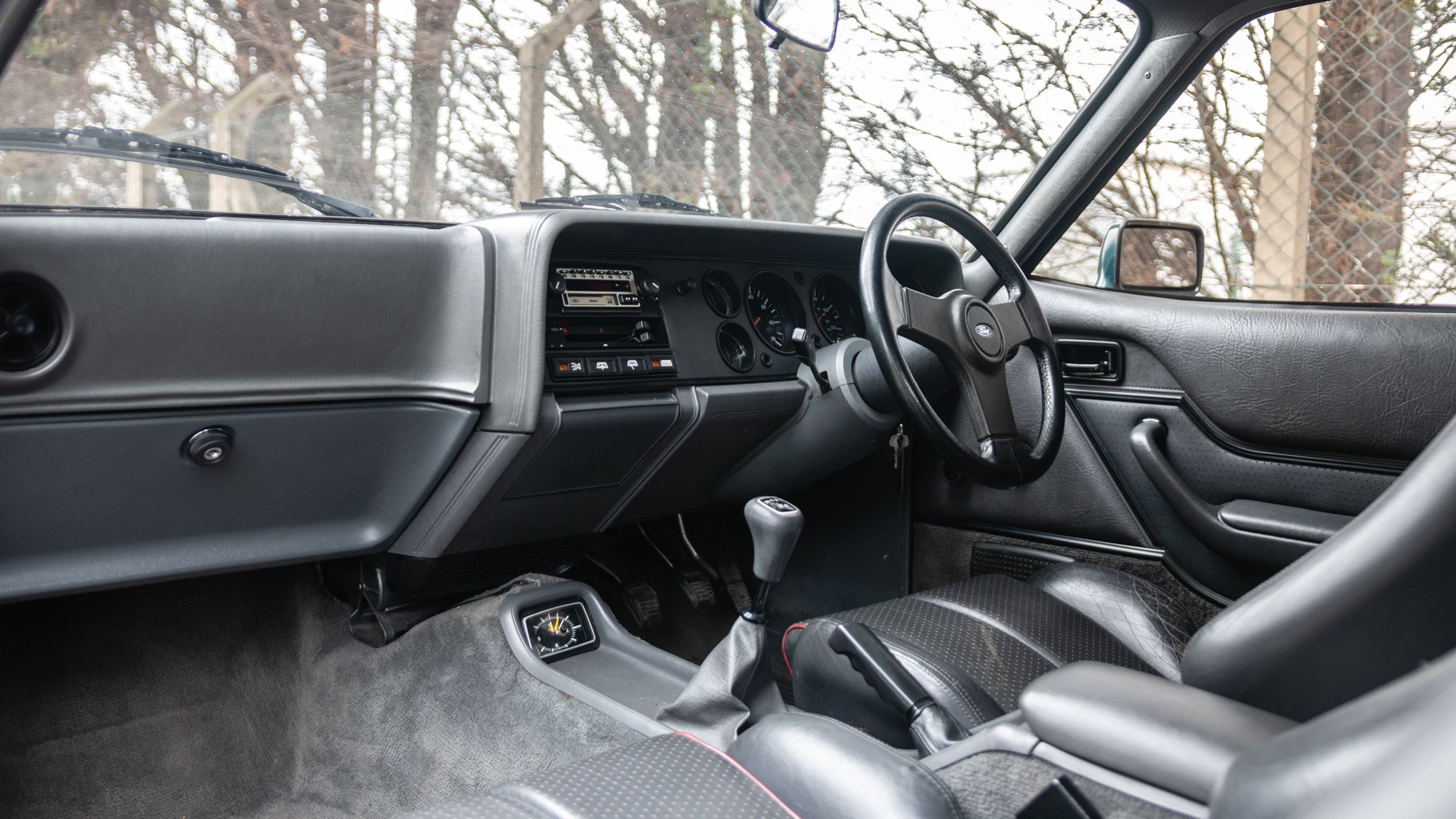
The ‘Cologne’ V6 bursts crisply to life, its fulsome burble reverberating off the workshop walls. It’s no all-American V8, but blip the throttle and the whole car shimmies on its suspension. You don’t get thatin an XR3i. Edging out into the drizzle, I skirt the perimeter fence alongside Ford’s own railway line to the factory gate. The security guard does a double-take, then salutes as he raises the barrier. The Capri was never built in Dagenham – UK production was at Halewood, near Liverpool – but already I feel like a hometown hero.
Torque of the town
Driving the Capri on rain-soaked roads, I’m acutely aware of its ‘lively’ reputation. Like the grizzled geezer in the pub who claims he once worked for the Krays, it’s an old-school charmer – right up until the moment it clouts you with a pint glass. Or, more accurately, lobs you sideways into a lamp post. Thankfully, its limits are low enough that you can indulge your Sweeneyfantasties at modest speeds. Oh, for some artfully scattered cardboard boxes…
Fleeing the post-industrial sprawl for deepest Essex, the Capri soon reveals itself as a car of contrasts. Turn-in is ponderous, yet the meaty steering bristles with feedback. The cart-sprung rear is easily unsettled, but well-calibrated dampers and tall tyres deliver a supple ride. And while outright grip is modest, the limited-slip diff ably transfers the torque to Tarmac.
Torque,rather than power,is the engine’s defining characteristic – in marked contrast to a high-revving hot hatch. It pulls strongly and smoothly, despite rather lofty gearing, then serves up a cultured snarl as the needle passes 4,000rpm. The clutch is heavy and five-speed manual ’box is long-of-throw and demands a deliberate shove. Even so, it feels refreshing to really drivea car, instead of letting technology do most of the work.

I’d be thankful for modern brakes, though. Like most classic cars, the Ford isn’t especially keen to slow down, and the heart-stopping moment when a Qashqai turns right without warning is forever etched into my memory. Being the journalist who wrote-off the final Capri isn’t the epitaph I had in mind, and only a mighty stomp on the middle pedal keeps the car – and to a lesser extent, my reputation – intact.
Bburago Ford Capri 1/24
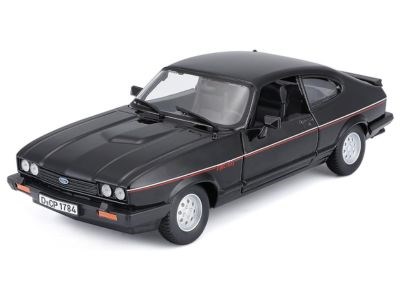
Ford Capri 280 review: verdict
Fast Fords inspire a level of devotion that puts scientologists to shame, with the Capri 280 more exalted than most. Indeed, among blue oval-badged cars of the 1980s, arguably only the Sierra RS Cosworth boasts more car-show kudos. Such reverence, along with the car’s 50th anniversary, has inflated prices to the point that a mint 280 costs as much as a new Porsche Cayman. But since when has buying a Capri been a rational decision?
If you’ve fallen for the Ford’s straight-talking charm, be sure to consult the ‘brooklands280’ website, which has a tool to verify genuine 280s using the engine and chassis numbers. Be warned: there are fakes out there – and originality is key to value. Alternatively, you could pick up a mechanically-identical 2.8 Injection Special for a fraction of the cost.
Me? I always preferred the Stones to the Beatles, but I can see the appeal of the Capri. As one of the owners on brooklands280 says: “They’re unique crowd pullers. A touch of classic gold”.